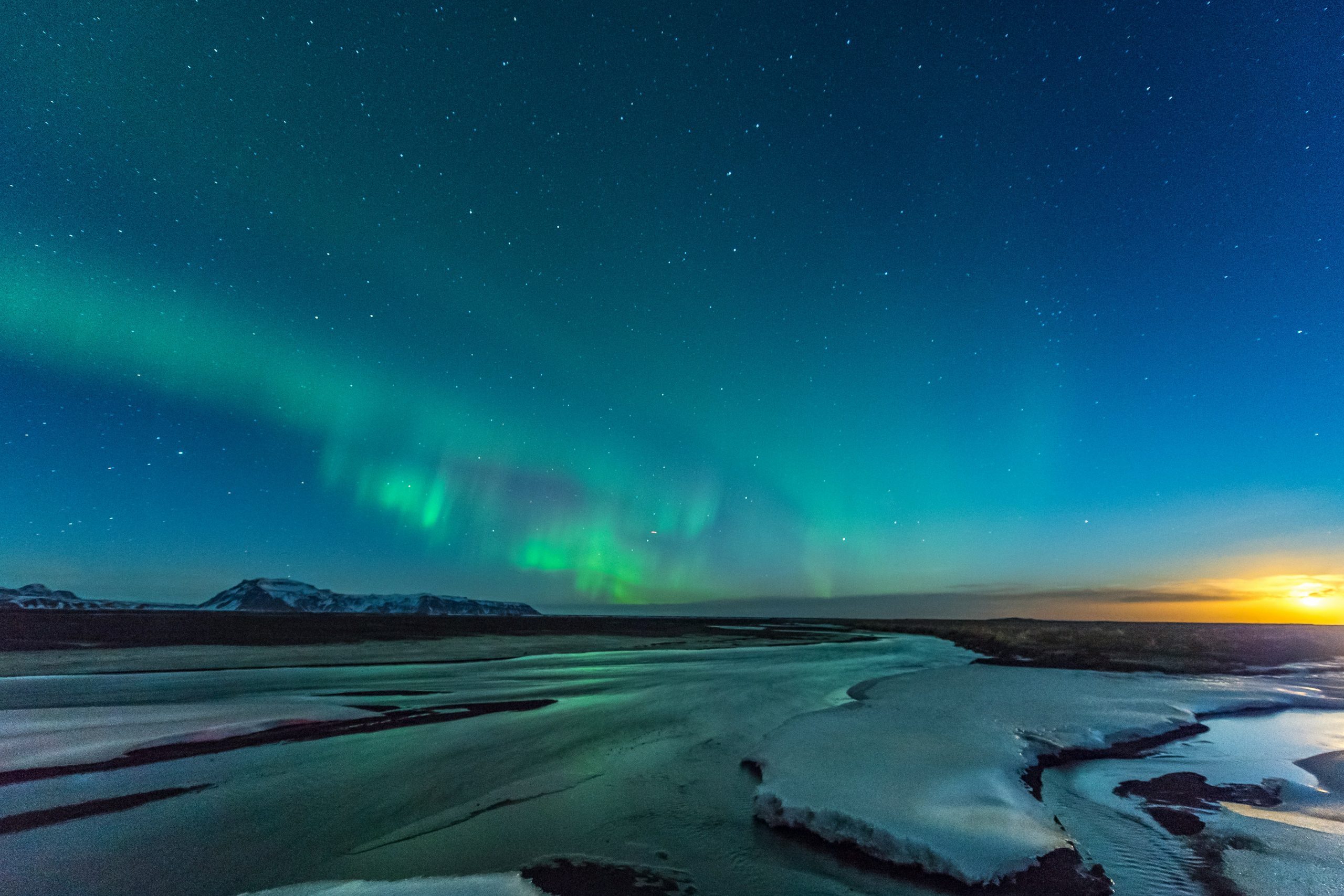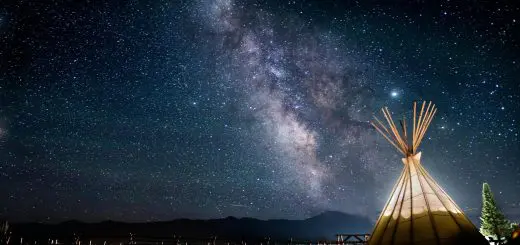The History of Postcards and Their Travel Connection

Looking for more amazing products? Check out our online store and explore our collection here! Happy shopping!
Before diving in, please note: This post is for informational purposes only. If you’d like to know more about how we approach topics, feel free to check out our friendly Disclaimer Page.
Hey there, amazing readers! 
We’re committed to delivering quality posts, and your support (even just sticking around despite the ads) means everything to us. So, bear with us, and thanks for helping us keep the good vibes rolling. Now, on to the fun stuff!
TRANSLATE BUTTON AT THE END OF THE ARTICLE
A Quick Overview
Postcards have an intriguing history that mirrors the development of communication, travel, and even art.
These simple pieces of card have journeyed through time, reflecting the experiences and sentiments of countless travelers.
From the first handwritten notes sent on an unadorned piece of paper to the vibrant, illustrated cards we see today, postcards have been a charming means of sharing our adventures with loved ones.
Let’s dive into this delightful history, exploring how postcards have shaped our travel experiences and relationships over the years.
The Birth of Postcards: A Journey Through Time
The story of postcards begins in the early 19th century.
In 1840, the invention of the penny post in the UK made sending letters more affordable.
People started to realize that sending simple messages on a piece of paper could save time and money.
The first official postcard, created in Austria in 1869, featured a simple design with space for writing.
This marked the beginning of a new era in communication.
In the United States, postcards gained popularity in the late 1800s.
The post office allowed individuals to send postcards without an envelope.
This made it easy for travelers to send quick notes home.
Postcards became a fashionable mode of communication, especially among the middle class.
By the 1900s, postcards had become a staple in American households.
They served as souvenirs from vacations, a way to share experiences, and a means to connect with friends and family.
They were often adorned with colorful images and artistic designs, capturing the essence of a destination.
The introduction of the picture postcard in the late 19th century changed the landscape even further.
Instead of merely sending a message, travelers could now share an image of the places they visited.
This allowed them to convey their adventures visually.
The growth of the postcard industry coincided with significant advancements in printing technology.
Lithography made it possible to produce high-quality images at a lower cost, leading to a boom in postcard production.
By the early 20th century, postcards were not just a means of communication; they were also a form of art.
The Evolution of Postcards: From Paper to Digital
As the years rolled on, postcards evolved in various ways.
Initially, they were simple, blank cards, but they soon transformed into works of art.
Artists contributed to this transformation by creating lovely designs that celebrated culture, nature, and everyday life.
People began to collect postcards, and this quickly became a popular hobby.
The introduction of color printing in the early 20th century allowed for vibrant designs.
This innovation made postcards even more appealing.
Suddenly, a postcard was not just a message; it was a piece of art that people cherished and collected.
Fast forward to the late 20th century, and technological advancements were on the horizon.
Discover "The Traveler’s Guide: Your Ultimate Companion for Every Adventure
"
The rise of the internet and digital communication shifted how we share experiences.
Email and social media became popular means to communicate, overshadowing traditional postcards.
However, postcards adapted to this digital age.
Many companies began offering services to create digital postcards and e-cards.
While these digital versions lacked the tactile charm of their paper counterparts, they still allowed travelers to share their experiences instantly.
Despite the convenience of digital communication, the nostalgia for physical postcards remains.
Many people still appreciate the charm of holding a postcard in their hands and sending it through the mail.
The tactile experience of writing on a postcard has not lost its appeal.
Early Postcards: A Glimpse into 19th Century Travel
The earliest postcards offer a fascinating snapshot of 19th-century travel.
They often featured scenic landscapes, historic landmarks, and cultural icons.
When I look at these postcards, I feel transported to another time.
It’s a window into the past, showcasing how people viewed the world around them.
Travel during this time was a privilege for the wealthy and adventurous.
Postcards became a way to document journeys to exotic locations, from the beaches of the Mediterranean to the mountains of Switzerland.
They reflect the cultural curiosity of the age, where exploration was synonymous with education.
Many early postcards were printed using a technique called chromolithography.
This allowed for stunning, colorful images that captivated the viewer.
They often depicted local customs, traditional costumes, and even famous personalities.
It’s incredible how much culture can be captured in a single image.
Another interesting aspect is that postcards were often used to promote tourism.
Hotels, travel agencies, and local governments produced postcards to entice visitors.
The beautiful images showcased the best of what a destination had to offer.
It’s like a vintage advertisement that drew people in with promises of adventure.
Additionally, these early postcards served as a vital link between travelers and those at home.
They often included messages about the journey, weather conditions, and local delicacies.
Through these words, we can sense the excitement and wonder of traveling in an age that was beginning to embrace mobility.
Picture Postcards: Capturing Moments on the Go
The advent of picture postcards truly revolutionized the way we communicate our travel experiences.
Rather than just sending a few words, the combination of image and text told a more comprehensive story.
A picture postcard could convey a moment in time, a feeling, or a memory in an instant.
Picture postcards emerged in the late 1800s, providing a new avenue for creativity.
Artists began to showcase their work on postcards, and photographers started capturing iconic images.
Each postcard became a snapshot of a destination, allowing the sender to share not just their experience, but the beauty of the place itself.
When I receive a postcard featuring a breathtaking landscape or a buzzing city square, I can almost hear the sounds, feel the atmosphere, and envision the people bustling around.
These images create a connection that transcends distance.
They allow the recipient to experience a slice of the sender’s adventure, sparking curiosity and wanderlust.
The popularity of picture postcards surged with the rise of tourism.
Travelers began to seek out postcards as mementos of their journeys.
This led to the establishment of postcard racks in hotels, gift shops, and tourist attractions.
It became a tradition—collecting postcards from each trip and sharing them with friends and family.
Moreover, picture postcards also served as a valuable historical record.
They document changes in landscapes, architecture, and cultural practices over time.
Looking back at old postcards, we can trace the evolution of a destination and appreciate how much things have changed.
In this way, picture postcards are not just cards; they are time capsules that tell stories long after the journey has ended.
They preserve moments that might otherwise fade with time, allowing us to reminisce about our travels and share our experiences with others.
The Golden Age of Postcards: Collectors Unite!
The early 20th century is often referred to as the golden age of postcards.
During this time, the postcard industry flourished, and collecting postcards became a popular pastime.
It wasn’t just about sending messages; it was about collecting art, history, and memories.
Postcard fairs and exhibitions began to pop up.
Enthusiasts gathered to trade their prized postcards, showcasing rare finds and unique designs.
Some collectors focused on specific themes, like travel destinations, historical events, or famous landmarks.
The excitement of hunting for that one elusive postcard became a thrilling quest.
Many postcards from this era are now considered collectible treasures.
Some feature exquisite illustrations, while others showcase significant moments in history.
Vintage postcards often fetch high prices at auctions, testament to their lasting appeal.
The golden age also saw the rise of postcard publishers.
Companies like the Curt Teich Company and the E.
C.
Kropp Company produced millions of postcards, many of which became iconic.
Their attention to detail and quality craftsmanship made their postcards highly sought after by collectors.
During this time, postcards also became a canvas for artists.
Notable artists and illustrators contributed their work, turning postcards into miniature masterpieces.
This blend of art and communication resonated with people, making postcards a beloved form of expression.
As travel became more accessible, the number of postcards produced surged.
From seaside resorts to bustling cities, every destination had its unique postcard.
This rush of creativity and artistry during the golden age solidified postcards as cherished keepsakes of travel.
Travel Destinations: How Postcards Inspired Adventure
One of the most remarkable things about postcards is their power to inspire adventure.
When I receive a postcard from a friend who just visited a beautiful location, it often ignites a spark of wanderlust within me.
Suddenly, I find myself daydreaming about hopping on a plane or hitting the road.
Postcards showcase the allure of destinations, highlighting their unique features.
From breathtaking landscapes to vibrant cultural scenes, they act as windows into new worlds.
A picture of a serene beach or a bustling market can make anyone yearn for exploration.
In the early 20th century, many people relied on postcards to plan their travels.
They would browse through postcard displays, envisioning their next adventure.
These cards often featured tourism slogans and enticing descriptions, painting a picture of the experiences awaiting them.
Similarly, postcards have played a role in shaping travel trends.
When a destination becomes popular in postcards, it often leads to increased tourism.
It’s fascinating to see how a simple card can impact travel choices and inspire people to visit places they may never have considered.
Moreover, postcards have encouraged cultural exchange.
Travelers send postcards to share their experiences with friends and family, fostering a sense of connection and curiosity.
This exchange of stories and imagery encourages exploration and understanding of different cultures.
In a way, postcards serve as ambassadors of travel.
They encapsulate the essence of a destination and invite others to experience it for themselves.
They create a sense of excitement and anticipation, reminding us of the beauty that awaits just beyond our doorstep.
Postcard Messaging: The Art of Sending Greetings
Sending a postcard is an art form in itself.
It goes beyond simply saying, “Wish you were here.” It’s about conveying emotions, sharing experiences, and connecting with loved ones.
When I send a postcard, I carefully think about the message I want to share.
Each word carries a piece of my journey.
The personal touch of a postcard adds to its charm.
Unlike a quick text or email, a handwritten message feels more intimate.
It shows that I took the time to think about the recipient and share a part of my adventure with them.
Postcard messaging has evolved over the years.
In the early days, people often wrote long letters on the back of postcards, filling every available space with details about their travels.
Today, while some still embrace this tradition, others may choose to keep it simple and sweet.
What makes postcard messaging special is its spontaneity.
There’s something delightful about sending a postcard from a train station or a beach.
It captures the moment perfectly.
The card becomes a snapshot of my thoughts and feelings at that time.
Additionally, postcards often serve as keepsakes for recipients.
They can pin them on a bulletin board, display them in a frame, or slip them into a scrapbook.
Each postcard tells a story, and the recipient can relive the experience every time they see it.
Sending postcards also fosters a sense of connection.
In a fast-paced digital world, receiving a postcard in the mail feels like a treasure.
It reminds us that someone is thinking of us, even from afar.
It builds relationships and strengthens bonds.
Vintage Postcards: Treasures of Nostalgia and Joy
Vintage postcards hold a special place in the hearts of many.
They evoke feelings of nostalgia, transporting us back to simpler times.
When I stumble upon an old postcard, I can’t help but admire its design and the stories it carries.
These postcards often feature charming illustrations and captivating photography.
They capture the essence of a bygone era, reminding us of the way people traveled and communicated.
It’s like holding a piece of history in my hands.
Collecting vintage postcards has become a popular hobby.
Many enthusiasts scour flea markets, estate sales, and online shops for hidden gems.
Some collectors focus on specific themes or time periods, while others simply love the thrill of discovery.
Each vintage postcard tells a story.
They reflect not only the places they depict but also the sentiments of the people who sent them.
I can imagine the traveler writing about their experiences, dreaming of sharing their adventures with someone special.
Vintage postcards also serve as valuable historical documents.
They showcase changes in fashion, architecture, and culture over the decades.
By studying these cards, we gain insight into the past and how people perceived the world around them.
Moreover, vintage postcards have found a new life in the digital age.
Many creators incorporate them into art projects, scrapbooking, and home decor.
The timeless charm of these postcards continues to inspire creativity and joy.
In this way, vintage postcards are more than just cards; they are time capsules brimming with history and emotion.
They remind us of our shared experiences and the beauty of travel.
Postcards Around the World: Cultural Connections
Postcards have a remarkable ability to connect cultures.
They serve as a medium for sharing stories, experiences, and traditions across borders.
When I receive a postcard from a friend traveling abroad, it opens my eyes to a different way of life.
Postcards often showcase local customs, food, festivals, and landmarks.
They provide a glimpse into the culture of a destination, helping to foster understanding and appreciation between people.
A postcard from Japan featuring cherry blossoms can evoke a sense of wonder and curiosity about that culture.
Many countries have embraced postcards as a means of promoting their heritage.
Tourist boards produce postcards highlighting cultural landmarks and events, encouraging travelers to explore and learn.
It’s a beautiful way to celebrate diversity and showcase unique traditions.
Moreover, postcards can serve as a bridge between generations.
Older postcards often reflect the customs and values of their time, while new ones capture contemporary culture.
This intermingling of past and present allows us to appreciate how cultures evolve.
In addition, postcards can facilitate meaningful conversations.
When I send a postcard featuring a local dish or a traditional festival, it often leads to discussions about cultural differences and similarities.
It’s a wonderful way to connect with others and learn from one another.
Postcards can also break down barriers.
They allow us to share our adventures with people from different backgrounds.
A postcard can spark joy and curiosity, transcending language and cultural differences.
Ultimately, postcards serve as a universal symbol of connection.
They remind us that, despite our differences, we all share the desire to explore, understand, and appreciate the world around us.
The Decline of Traditional Postcards in Modern Times
In recent years, traditional postcards have faced challenges in an increasingly digital world.
With the rise of instant messaging and social media, sending postcards has become less common.
Many people opt for quicker, more convenient forms of communication.
The decline in postcard sales has impacted the industry.
Fewer shops stock postcards, and some have even closed their doors.
It’s disheartening to see the once-thriving postcard culture diminish in the face of technology.
However, this shift has also led to a sense of nostalgia for many.
People who grew up sending and receiving postcards often reminisce about the joy of finding a card in the mail.
There’s something special about the anticipation of waiting for a postcard to arrive.
Despite the challenges, there’s a glimmer of hope for traditional postcards.
Some companies are working to revitalize the market by focusing on quality and creativity.
They’re producing unique designs and collaborating with artists to create visually stunning postcards.
Additionally, there’s a growing trend of personalized postcards.
People are now creating custom postcards featuring their own photographs and messages.
This personal touch adds a new dimension to postcard sending, making it more meaningful.
Travelers who prioritize authentic experiences often seek out postcards as keepsakes.
They appreciate the art of writing a message and sending it through the mail, cherishing the connection it fosters with the recipient.
While the landscape of communication has changed, the essence of postcards remains.
They continue to serve as a tangible reminder of travel and connection, even amidst the digital noise.
Reviving Postcards: A Trendy Travel Keepsake
Despite the challenges, there’s a revival of interest in postcards.
Many travelers are rediscovering the charm of sending postcards as a way to celebrate their journeys.
It’s refreshing to see this trend gaining momentum, as more people embrace the art of sending postcards.
In an age of instant messaging, postcards offer a unique way to connect with friends and family.
They bring a sense of nostalgia and authenticity that digital communication often lacks.
When I send a postcard, it feels like I’m sharing a piece of my heart.
Many companies are capitalizing on this revival by creating trendy, eye-catching postcards.
These new designs often incorporate modern aesthetics and artistic flair.
Travelers are drawn to these postcards, eager to share their adventures in style.
Social media has played a role in this resurgence as well.
People often share photos of their postcards online, showcasing their travels and inspiring others to do the same.
It’s a delightful way to blend the old with the new.
Additionally, the rise of local art markets has led to an increase in handmade postcards.
Artists create unique designs that reflect the spirit of their community.
This not only supports local artists but also creates a deeper connection to the destination.
Sending postcards has also become a popular activity among younger generations.
Schools and youth groups often encourage students to send postcards while traveling, reinforcing the importance of thoughtful communication.
It’s heartwarming to see the younger crowd embracing this tradition.
Ultimately, the revival of postcards highlights our desire for genuine connections.
In a world flooded with digital noise, sending a postcard is a beautiful reminder that personal touch still matters.
The Future of Postcards: Embracing Technology and Travel
Looking ahead, postcards are likely to continue evolving in response to changing technology and travel trends.
While traditional postcards will always hold a special charm, incorporating modern elements can enhance their appeal.
For instance, augmented reality features can add a new dimension to postcards.
Imagine receiving a postcard that, when scanned with a smartphone, reveals a short video or a 3D animation of the destination.
It’s an exciting way to blend the physical and digital worlds.
Moreover, many companies are exploring eco-friendly postcard options.
Sustainable materials and printing processes can help reduce the environmental impact of postcard production.
Travelers are becoming increasingly aware of their choices, and eco-conscious postcards could attract a new audience.
The rise of online postcard services allows people to send custom postcards directly from their smartphones.
This convenience appeals to those who appreciate the nostalgia of postcards but prefer quick communication.
It’s a win-win for both traditionalists and modern-day travelers.
Additionally, postcards could play a role in fostering connections between travelers.
For example, a postcard exchange program could encourage travelers to send cards to one another, creating a sense of community and shared experiences.
As travel continues to evolve, so will postcards.
They will adapt to meet the needs and desires of a new generation of travelers while retaining their timeless charm.
The essence of sharing experiences, emotions, and adventures will always be at the heart of postcard sending.
In the end, whether they are traditional paper postcards or digital variations, postcards will remain a beloved means of connecting with others.
They remind us that travel is about sharing moments and memories, one postcard at a time.
Conclusion
The history of postcards is a colorful tapestry woven with the threads of travel, art, and communication.
From their humble beginnings to their role as cherished keepsakes, postcards have captured the essence of our journeys.
They’ve inspired adventures, fostered connections, and preserved memories for generations.
Even as technology continues to evolve, the charm of postcards remains.
They remind us of the beauty of thoughtful communication and the joy of sharing experiences with loved ones.
So, the next time you embark on a journey, consider sending a postcard.
It just might spark joy, connection, and a sense of nostalgia that transcends time and distance.

The Enlightenment Journey is a remarkable collection of writings authored by a distinguished group of experts in the fields of spirituality, new age, and esoteric knowledge.
This anthology features a diverse assembly of well-experienced authors who bring their profound insights and credible perspectives to the forefront.
Each contributor possesses a wealth of knowledge and wisdom, making them authorities in their respective domains.
Together, they offer readers a transformative journey into the realms of spiritual growth, self-discovery, and esoteric enlightenment.
The Enlightenment Journey is a testament to the collective expertise of these luminaries, providing readers with a rich tapestry of ideas and information to illuminate their spiritual path.
Our Diverse Expertise
While our primary focus is on spirituality and esotericism, we are equally passionate about exploring a wide range of other topics and niches 

To ensure we provide the most accurate and valuable insights, we collaborate with trusted experts in their respective domains 
Our blog originally focused on spirituality and metaphysics, but we’ve since expanded to cover a wide range of niches. Don’t worry—we continue to publish a lot of articles on spirituality! Frequently visit our blog to explore our diverse content and stay tuned for more insightful reads.
Hey there, amazing reader! 
Check out our store here and take a peek at some of our featured products below! Thanks for being awesome!











